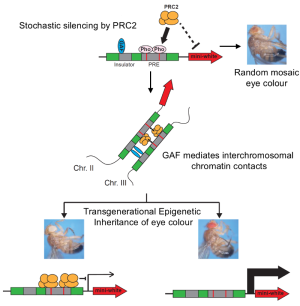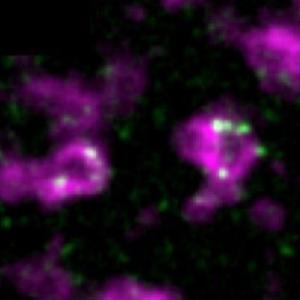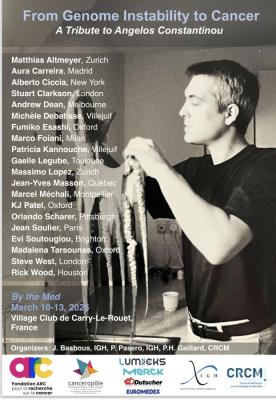
Interchromosomal contacts between regulatory regions trigger stable transgenerational epigenetic inheritance in DrosophilaScientists from the CNRS (IGH) in collaboration with a laboratory from Oxford University have discovered a new way in which the organisation of DNA within our cells affects genes for generations. The three-dimensional organization of chromatin can initiate a mechanism that transmits the active or the repressed state of gene expression and the manipulation of this 3D organization can be used to modify this inheritance. This new finding uncovers a new way of inheritance in addition to the one transmitted...
Contact IGH Giacomo CAVALLI
Chromatin and cell biology

Traduction oui, mais compartimentéeLes cellules sont très compartimentées. On y trouve des organelles entourées de membranes mais aussi des compartiments sans membrane, les condensats biomoléculaires dont la relation entre structure et fonction est très mal connue. Dans une étude publiée dans Nature Communications, des scientifiques démontrent, en utilisant le modèle drosophile, la compartimentation fonctionnelle de ces condensats. En savoir plus : Ramat, A., Haidar, A., Garret, C. et al. Spatial organization of translation and...
Contact IGH Martine SIMONELIG
mRNA Regulation and Development

Outstanding scientists elected to EMBO Membership
Outstanding scientists elected to EMBO Membership
In the 60th anniversary year, 100 new members and 20 associate members join the community.
Contact IGH Philippe PASERO
Maintenance of genome integrity during DNA replication

FRM 2024Soirée lauréats de la Fondation pour la Recherche Médicale organisée par le comité Occitanie Languedoc/Roussillon de la FRM du 15 mai dernier. L'objectif de cette soirée était de mettre en valeur les chercheurs montpelliérains pour l'obtention de financement de la Fondation, preuve que leurs projets de recherche proposés étaient particulièrement pertinents.

Chaires d’excellenceThe Health Innovation Agency presented the winners of the France 2030 “Chairs of Excellence in Biology/Health” call for projects. This system – which makes it possible to finance a research team in France over a period of five years – aims to retain and attract the best researchers in their discipline to France and thus strengthen the excellence of French research. Among the 22 distinguished researchers, 2 are from IGH : Giacomo CAVALLI: EpigeneticMemories “Deciphering the role of regulatory...
Vainqueur 3MT
Ali HAIDAR, Ph.D student in Martine SIMONELIG's team, won the regional final of "3 Minute Thesis" (https://college-doctoral.fr/pendant-le-doctorat/actions-carriere-emploi/3mt/ ) organized by the Coimbra Group and the Languedoc-Roussillon Doctoral College.

2024 IGH call
The Institute of Human Genetics of Montpellier (IGH) opens a call for applications to a Principal Investigator position in its main areas of interest, namely genome dynamics, genomics, epigenetics, RNA biology, computational biology and AI, immunogenetics, developmental biology, cancer and infectious diseases.
Direction

In Memoriam - Angelos Constantinou
It was with great sadness that we learned of the death of Angelos Constantinou on January 20, 2024. Angelos Constantinou was a world-renowned biochemist specializing in DNA repair mechanisms. He was an outstanding researcher, combining scientific rigor with remarkable creativity. Angelos was also an excellent teacher, a formidable colleague and, on a personal level, a friend. His death leaves a huge void at IGH and throughout the scientific community.

Giacomo Cavalli a Highly Cited Researcher 2023Each year, Clarivate™ identifies the small fraction of the global research scientists and social scientists who have demonstrated significant and broad influence in their field(s) of research. This select group contribute disproportionately to extending the frontiers of knowledge and gaining for society innovations that make the world healthier, more sustainable and more secure. Each researcher selected has authored multiple Highly Cited Papers™ which rank in the top 1% by citations for their...
Contact IGH Giacomo CAVALLI
Chromatin and cell biology

